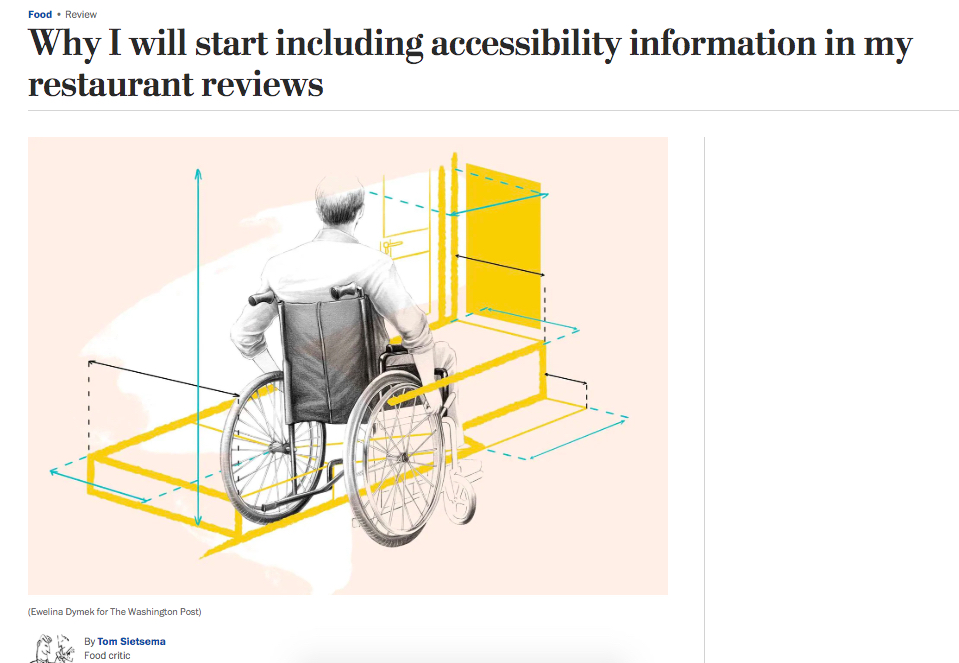When I’m giving disability issues talks, I’m often asked “Because of the ADA and other laws, are things getting better?” My answer is some version of “yes and no”. Here’s this week’s version:
- Unsafe situation on nearby corner of busy street
The mile long reconstruction of an arterial road near my house just finished. Drivers are breathing a sigh of relief about not having to drive a couple extra miles to get around the construction. I walked part of the reconstructed sidewalks with a friend who used to teach blind kids and she pointed out that on one corner the truncated domes (bumps) were mis-applied. They’ll launch blind people kiddy-cornered from the northwest corner of the intersection to the southeast corner. I immediately notified a staff member in the city’s engineering department and she replied that she’d turned it over to the project manager and would get back to me with an update when available. Being concerned that soon the snow will fly and it won’t be able to be fixed until next spring or summer, I notified the city manager. He has not gotten back to me yet. - Unreadable obituaries:
When you reach the age I have, you start checking the obituaries as regularly as you have that first morning cup of coffee. Recently the local paper switched their provider of obituaries and they’re no longer accessible to my screen reader. When I contacted the local paper’s representative, they gave me the email of the help desk of the new provider. I emailed them and offered to work with them to fix the problem. No word back yet. My work around is to ask a sighted friend who reads the paper to let me know if anyone she knows is listed in the obits. Not the same, but better than nothing. - Inaccessible library app:
The public library is touting an app, Libby where one can download audio and e-books on your iPhone. I downloaded it and opened it to a “secret” message to Voiceover users (meaning it wasn’t printed on the screen for sighted people to see, but just audio) that the app wasn’t accessible to us and we should use Overdrive app instead. After several emails and phone calls to the public library, they raised the complaint with the library system who will raise it with the vendor. On the company’s website I read that they’re “working hard” to make Libby accessible, no timeline given. I put a comment on the CEO’s blog since I couldn’t find his email, but have no way of knowing if it was read since I haven’t heard back. There’s plenty of responsibility to be spread around on this one: e.g. why did the company knowingly market an inaccessible app? Why did the library system buy an inaccessible product? - Disability emoji’s launched in version 13.2 for iPhones and iPads:
For over a year, we’ve been hearing that some disability emoji were coming soon to iPhones and iPads. They have arrived, including persons with “cochlear implants” “probing canes”, “guide dog” and “service dog”. I’ve never heard a long cane, also called a white cane, called a “probing cane”. Others in the disability community point out that many disabilities including cognitive disabilities don’t get an emoji. I also notice some of the other new emoji give the person a high status profession “nonbinary judge” or such, but we just get a disability. Am I happy? A little! (Insert emoji of slightly smiling face in your mind)
I was reading Kushner’s excellent Nine Essential Things I’ve Learned about Life. He has a theology of “not yet” that I really like. Are things all better on the accessibility front? Not yet, but that may happen someday if we all keep plugging away on it.
Katherine Schneider, Ph.D.
Senior Psychologist, Emerita
Counseling Service
University of Wisconsin-Eau Claire
Author of Occupying Aging: Delights, Disabilities and Daily Life, To the Left of Inspiration: Adventures in Living with Disabilities and a children’s book Your Treasure Hunt: Disabilities and Finding Your Gold
Blog: http://kathiecomments.wordpress.com



